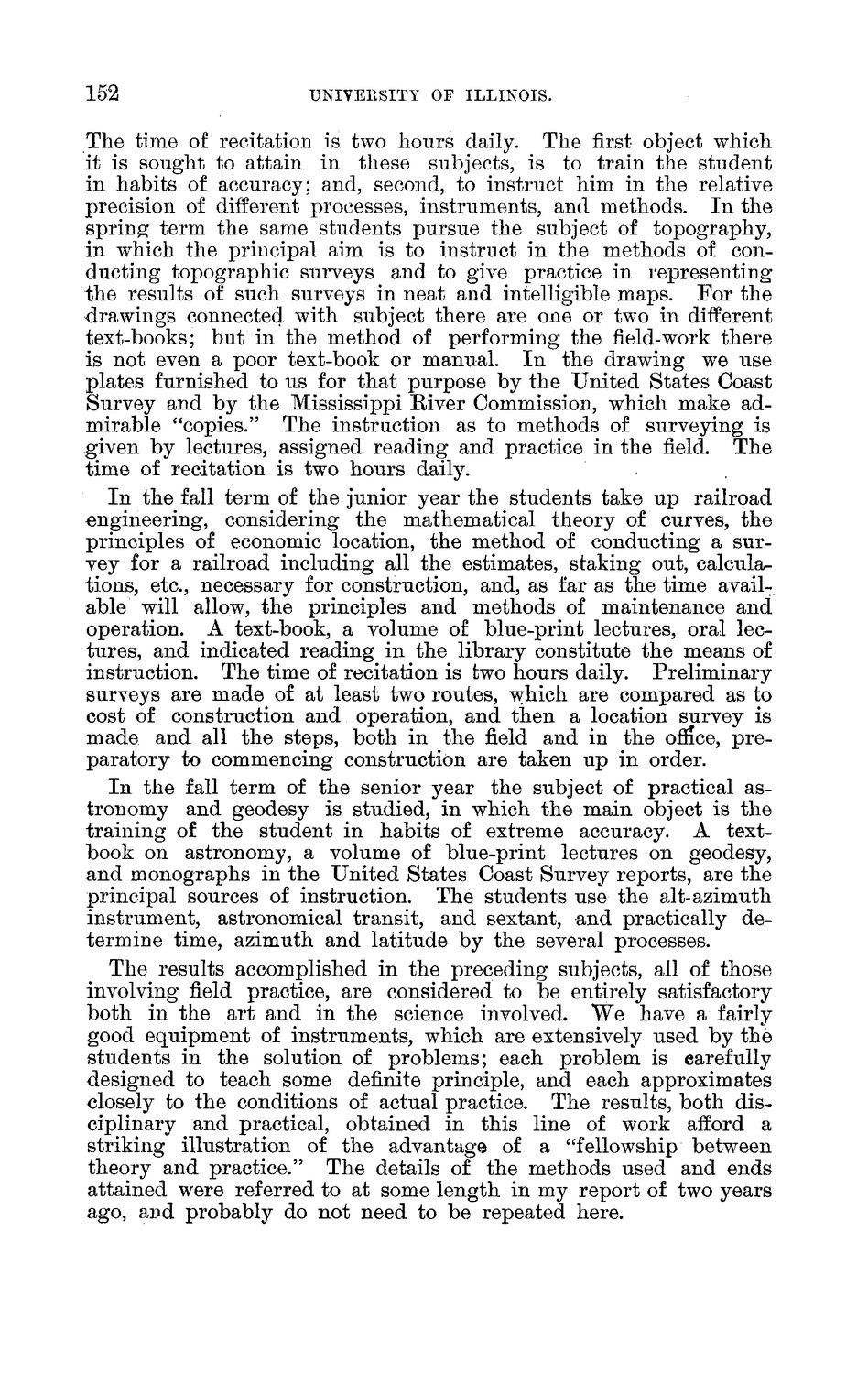| |
| |
Caption: Board of Trustees Minutes - 1888
This is a reduced-resolution page image for fast online browsing.

EXTRACTED TEXT FROM PAGE:
152 UNIVEESITY OF ILLINOIS. The time of recitation is two hours daily. The first object which it is sought to attain in these subjects, is to train the student in habits of accuracy; and, second, to instruct him in the relative precision of different processes, instruments, and methods. I n the spring term the same students pursue the subject of topography, in which the principal aim is to instruct in the methods of conducting topographic surveys and to give practice in representing the results of such surveys in neat and intelligible maps. For the drawings connected with subject there are one or two in different text-books; but in the method of performing the field-work there is not even a poor text-book or manual. I n the drawing we use plates furnished to us for that purpose by the United States Coast Survey and by the Mississippi River Commission, which make admirable "copies." The instruction as to methods of surveying is given by lectures, assigned reading and practice in the field. The time of recitation is two hours daily. I n the fall term of the junior year the students take up railroad engineering, considering the mathematical theory of curves, the principles of economic location, the method of conducting a survey for a railroad including all the estimates, staking out, calculations, etc., necessary for construction, and, as far as the time available will allow, the principles and methods of maintenance and operation. A text-book, a volume of blue-print lectures, oral lectures, and indicated reading in the library constitute the means of instruction. The time of recitation is two hours daily. Preliminary surveys are made of at least two routes, which are compared as to cost of construction and operation, and then a location survey is made and all the steps, both in the field and in the office, preparatory to commencing construction are taken up in order. I n the fall term of the senior year the subject of practical astronomy and geodesy is studied, in which the main object is the training of the student in habits of extreme accuracy. A textbook on astronomy, a volume of blue-print lectures on geodesy, and monographs in the United States Coast Survey reports, are the principal sources of instruction. The students use the alt-azimuth instrument, astronomical transit, and sextant, and practically determine time, azimuth and latitude by the several processes. The results accomplished in the preceding subjects, all of those involving field practice, are considered to be entirely satisfactory both in the art and in the science involved. We have a fairly good equipment of instruments, which are extensively used by the students in the solution of problems; each problem is carefully designed to teach some definite principle, and each approximates closely to the conditions of actual practice. The results, both disciplinary and practical, obtained in this line of work afford a striking illustration of the advantage of a "fellowship between theory and practice." The details of the methods used and ends attained were referred to at some length in my report of two years ago, and probably do not need to be repeated here.
| |